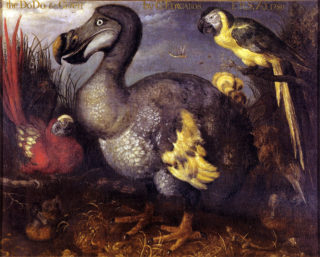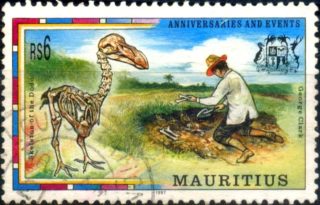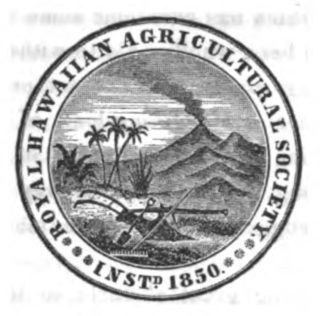During the nineteenth century, certain tropical islands and continental coasts in the world’s three major oceans witnessed the long-distance migration of millions of bonded laborers, chiefly though not exclusively from Asia. These migrations had lasting social, cultural, and demographic effects on both their places of origin and their destinations. Public memory of this form of migration, remembered as indenture or contract labor, plays a prominent role in local history and identity construction in sites ranging from Suriname and Fiji, South Africa and Trinidad to Mauritius and Hawai’i.
Distinguishing such bondage from slavery because of its term-limited nature, generations of scholars have debated where precisely to locate indenture in relation to the enslavement of Africans in the New World, the generally voluntary migration of European settlers, and Chinese-managed bonded labor. The issue is particularly complex for the period after the abolition of the transatlantic slave trade, which saw the ramping up of systems of indentured migration in the Mascarene and Caribbean basins, and the growing prominence of India and China as primary sites of worker contracting. Labor historians have focused on the arduousness of working and living conditions, the frequency of flagrant violations of contractual provisions, and the dubiousness of recruitment legislation and practice. Global historians such as Jürgen Osterhammel judge that the maintenance of self-ownership places indenture closer to free migration than to enslavement.1 Yet indenture remains relatively understudied, particularly from a comparative perspective. Apart from certain exceptions, scholars have tended to focus on discrete locations, empires, or ethnic migrations rather than study indenture as a global process.
What might a history of knowledge perspective contribute to the historiography of nineteenth-century indentured labor? And what insights might the study of indenture bring to the study of migrant knowledge? With these stakes in mind, permit me to sketch out a single case in which knowledge about indenture was transmitted across oceans, disciplines, and imperial jurisdictions.
Between 1864 and 1866, the distant sites of Hawai’i and Mauritius were interlinked in a knowledge network that encompassed migration (contract laborers), horticulture (cane), and natural science (the extinct native bird of Mauritius, the dodo). Prominent Westerners in Hawai’i at the time were interested in Mauritius, along with other colonial settings, as a “successful” case of an export-based plantation complex with a workforce comprised mainly of Asian contract laborers. Ultimately, the informant chosen for Mauritius happened to be George Clark, the English-born schoolmaster at Mahébourg, Mauritius, who would become famous for laying claim to discovering the first set of dodo bones on the island in 1866.



About a year before Clark unearthed his long-hoped-for dodo skeleton, he responded to a ten-part questionnaire sent on behalf of Robert Chrichton Wyllie, the Scottish-born minister of foreign affairs for the Kingdom of Hawai’i, via a London-based mutual contact. After offering several tips about sugar cane, including its shipment, the merits of cultivating different varieties, and the best forms of fertilizer, he proceeded to address at length Wyllie’s question about the contract labor system in Mauritius.
Clark presented the labor question there as a choice between “Madras Indians” and “the Bengalese,” which he addressed in terms of racialized attributes of physical robustness, propensity to disease, diet, and degree of submissiveness. Despite putative differences in their collective character, he judged that “they are both effective and useful labourers,” doubting whether any other people “in the world would do an equal quantity of work in sugar planting for the same cost as they do.”2
Clark’s response was just one of dozens of documents amassed by Wyllie as part of his endeavor to initiate contract labor migration to Hawai’i. Inquiring about practices of indenture across his contemporary world, he drew on a global range of informants from his personal network developed during his previous extended residence in Britain, Chile, India and Mexico; from his diplomatic network forged during nearly twenty years’ service as the Kingdom of Hawai’i’s Minister of Foreign Affairs; and from his planter network, which had coalesced around his publication vehicle, the Transactions of the Royal Hawaiian Agricultural Society (1851–57).

In April 1865, Wyllie furnished the German-born medic and botanist Wilhelm Hillebrand with the fruits of his inquiry. His findings featured extracts about contract labor from European, Asian, and Latin American newspapers; sample contracts of indenture from Macau, Province Wellesley (Malaysia), Singapore, and Jamaica; extensive quotations from John Cameron’s Our Tropical Possessions in Malayan India (London, 1865); and, finally, letters of introduction to government representatives and migrant brokers in Shanghai, Macau, Java, Colombo, Calcutta, Madras, Bombay, Kanagawa, and Yokohama.3
Several months prior, Hillebrand had been commissioned by the recently founded Hawaiian Board of Immigration (whose committee included the future King David Kalākaua) to undertake a scouting tour of Asia in order to contract laborers to Hawai’i from either India or China. Investing Hillebrand with a royal commission on behalf of Kamehameha V, Wyllie requested that all friendly governments, consuls, and “all Agents . . . engaged in sending . . . labourers to the West Indies, Peru and other foreign Countries” provide full assistance to Hillebrand in his mission to “procure, contract for and import into this Kingdom, labourers from such countries in Asia as can best supply them.”

I came by Wyllie’s inquiry during a round of research at the Hawai’i State Archives, whose rich holdings concerning the global and international history of the Kingdom of Hawai’i (1795–1893) are foreshadowed by the Indian banyan tree situated between it and ‘Iolani Palace, the Hawaiian royal residence. Investigating the links between Hawai’i’s consular and immigration systems, I sought to recover not simply the contours of Hawai’i’s place in the nineteenth-century international scene but also the personalities of the lesser-known individuals involved in this understudied piece of international history.
Beyond betraying the rather hobbyist character of nineteenth-century political administration and natural science, Wyllie’s networking practices reflect a compelling conjuncture of knowledge-making practices: mobile experts or “knowledge migrants” making knowledge about other migrants or what we might term “institutional migrant knowledge.”
The stakes of this case became clearer to me during an international workshop held at the University of Mauritius in March 2019 entitled “Towards Establishing a Comparative Framework for the Study of Indentured Labour.”5 When I mentioned that Clark was Wyllie’s informant in Mauritius, members of the audience were surprised that Clark had anything to do with indenture. The main focus of research on Clark addresses his academic rivalry with Richard Owen of the British Library over the competition to be named the true “discoverer” of the dodo bones. Yet Clark was not merely an aspiring natural historian or a schoolteacher whose students provided him the vital tip-off for finding the skeleton in the first place. Rather, he was an observer of the mid-nineteenth-century sugar plantation complex in Mauritius, and his thoughts about indenture made their way to Hillebrand, a German medic best known in the history of science for his work on Hawaiian plants ( Flora of the Hawaiian Islands: A Description of their Phanerogams and Vascular Cryptogams, 1888), and for initiating contract labor migrations from China in 1865, and later from Portugal in 1878.
This particular transfer of migrant knowledge between individuals of European origin may intuitively strike one as a shining example of intercolonial networking. Yet it is one that has long gone unrecognized. Hillebrand and Clark’s simultaneous pursuit of government careers, natural-scientific exploration, and information about migrants reflects the many individual and institutional links between natural-scientific and bureaucratic knowledge-making during the long nineteenth century. Bringing insights from the history of science to bear on the study of indenture can provide an alternate frame for understanding how indenture spread globally during the nineteenth century.
Most comparative accounts of contract labor define it as an institution of colonial production developed in the British Empire and subsequently disseminated in other imperial spheres. To this last point, Hawai’i’s status as an independent Kingdom during most of the nineteenth century has proven a wrinkle. Non-experts seeking to place it within a comparative focus usually work with the paradigm of American pseudo-empire in the islands. Yet few of the individuals actually involved in developing the contract labor system in the islands were Americans. To properly situate Hillebrand and Wyllie’s labor networking in its global context, we need to learn how these individuals negotiated their diverse personal motivations with those of Hawaiian governing elites and resident foreigners. In so doing, we can reposition the history of migration to Hawai’i within the perspective of global labor history rather than as a teleological history of American expansionism.
Knowledge, I propose, provides a heuristic for assessing how indenture was globally disseminated as a migration policy across different political settings during the mid nineteenth century. And this story is relevant to the history of migrant knowledge more broadly. Events like this underlay the gradual formation of a field of expertise about migration from patterns of informal information networking. Reconstituting the networks of the complex and mobile individuals through which indenture globally spread as a legal form of labor can sharpen our understanding of how migration practices and policies became universalized over the course of the nineteenth century, extending well beyond the framework of individual empires. Adjusting our lenses to the involved micro-events, we can reveal crisp images of complex historical characters whose effects as producers of knowledge on bonded migration was pivotal not only in the configuration of labor migration as a field of political-institutional knowledge, but also in very real labor and migration practices.

Nicholas B. Miller is Assistant Professor of History and Coordinator of the History Program at Flagler College.
- Jürgen Osterhammel, Die Verwandlung de Welt: Eine Geschichte des 19. Jahrhunderts (Munich: C. H. Beck, 2011), 242–43. ↩︎
- Hawai’i State Archives (hereafter: HSA), Interior Department, series no. 517, correspondence with Bureau of Immigration: letters to Dr. Hillebrand, 1865; letters from Wyllie to Hillebrand, July 7, 1865; enclosure to Hillebrand, “Letter from Mauritius by G. Clark,” May 5, 1864. ↩︎
- HSA Interior Department, Series 517, correspondence with Bureau of Immigration: letters to Hillebrand, April 8 and 12, 1865. ↩︎
- HSA, FO&Ex, 404-59-920, Hawaiian Officials Abroad, Special Missions, Hillebrand, 1865. ↩︎
- I would like to thank the organizers and funders of this event: the University of Mauritius’s Centre for Research on Slavery and Indenture; the UNESCO Aaprvasi Ghat Trust Fund; and ERC project The Colour of Labour, coordinated by Cristiana Bastos at the University of Lisbon. ↩︎



